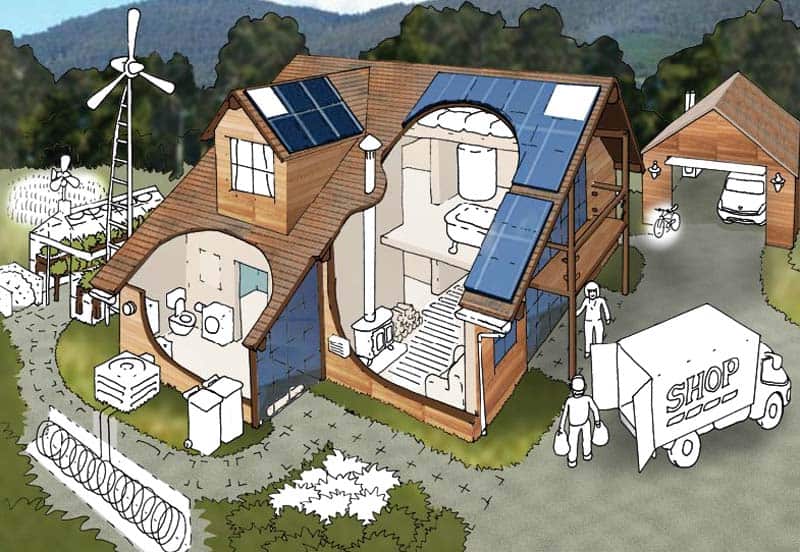Creating Eco-Friendly Homes for Sustainable Living

Creating Eco-Friendly Homes for Sustainable Living
As we navigate the challenges of the modern world, the importance of adopting environmentally responsible practices becomes increasingly evident. One significant area where individuals can make a positive impact is in the way we design and build our homes. By prioritizing eco-friendly principles, we can create living spaces that not only provide comfort but also contribute to a healthier planet.
Sustainable Materials for Construction
The foundation of an environmentally responsible home lies in the materials used for construction. Opting for sustainable materials such as reclaimed wood, recycled steel, and bamboo can significantly reduce the environmental impact of the building process. These materials not only minimize resource depletion but also often have lower carbon footprints compared to traditional alternatives.
Energy-Efficient Design and Systems
Implementing energy-efficient design principles is essential for reducing a home’s long-term environmental impact. This includes strategic placement of windows for natural light, proper insulation, and the integration of energy-efficient appliances. Incorporating renewable energy sources such as solar panels further enhances the home’s sustainability, reducing reliance on non-renewable energy.
Water Conservation Strategies
Conserving water is a critical aspect of creating an environmentally responsible home. Implementing water-saving fixtures, utilizing rainwater harvesting systems, and designing landscaping with native, drought-resistant plants are effective strategies. These practices not only contribute to the conservation of water resources but also reduce the overall ecological footprint of the home.
Waste Reduction and Recycling
Minimizing waste during the construction and operation of a home is paramount to its environmental responsibility. Utilizing recycled materials and implementing efficient waste separation and recycling systems help divert materials from landfills. Additionally, composting organic waste contributes to creating nutrient-rich soil, closing the loop on the home’s waste management cycle.
Smart Home Technology for Sustainability
Incorporating smart home technology can enhance a home’s sustainability by optimizing energy use and resource management. Smart thermostats, lighting systems, and home automation can be programmed to operate efficiently, reducing energy consumption. Integrating these technologies allows homeowners to monitor and control their home’s environmental impact in real-time.
Eco-Friendly Interior Design
The choices we make in furnishing and decorating our homes also play a role in their overall sustainability. Opting for furniture made from recycled materials, choosing low-VOC (volatile organic compound) paints, and selecting sustainable flooring options contribute to creating an eco-friendly interior. These choices not only enhance indoor air quality but also promote responsible consumption.
Green Roofs and Sustainable Landscaping
Green roofs, covered with vegetation, provide insulation, absorb rainwater, and create a habitat for wildlife. Integrating green roofs into home design contributes to energy efficiency and biodiversity. Furthermore, sustainable landscaping practices, such as xeriscaping and native plant gardens, reduce the need for water and chemical inputs, fostering a more resilient and environmentally friendly outdoor space.
Community Engagement and Collaboration
Building environmentally responsible homes goes beyond individual efforts. Engaging with the community and collaborating with local organizations can amplify the impact of sustainable practices. Sharing knowledge, resources, and experiences fosters a collective commitment to creating neighborhoods and communities that prioritize environmental responsibility.
Financial Incentives for Green Homes
Many governments and organizations offer financial incentives for homeowners who adopt environmentally responsible practices. These incentives may include tax credits, rebates, or grants for implementing energy-efficient technologies and sustainable building practices. Taking advantage of these opportunities not only benefits the homeowner financially but also encourages the widespread adoption of green building principles.
Embracing the Future of Eco-Friendly Living
In conclusion, creating environmentally responsible homes is a crucial step towards a sustainable future. By incorporating sustainable materials, energy-efficient design, water conservation strategies, waste reduction, and technology, homeowners can contribute to a healthier planet. Embracing eco-friendly practices in home construction and living not only benefits the environment but also enhances the well-being of individuals and communities.
For more information on Environmentally Responsible Homes, visit Jet Design Home. Take a step towards a greener future by exploring innovative and sustainable home design solutions.








